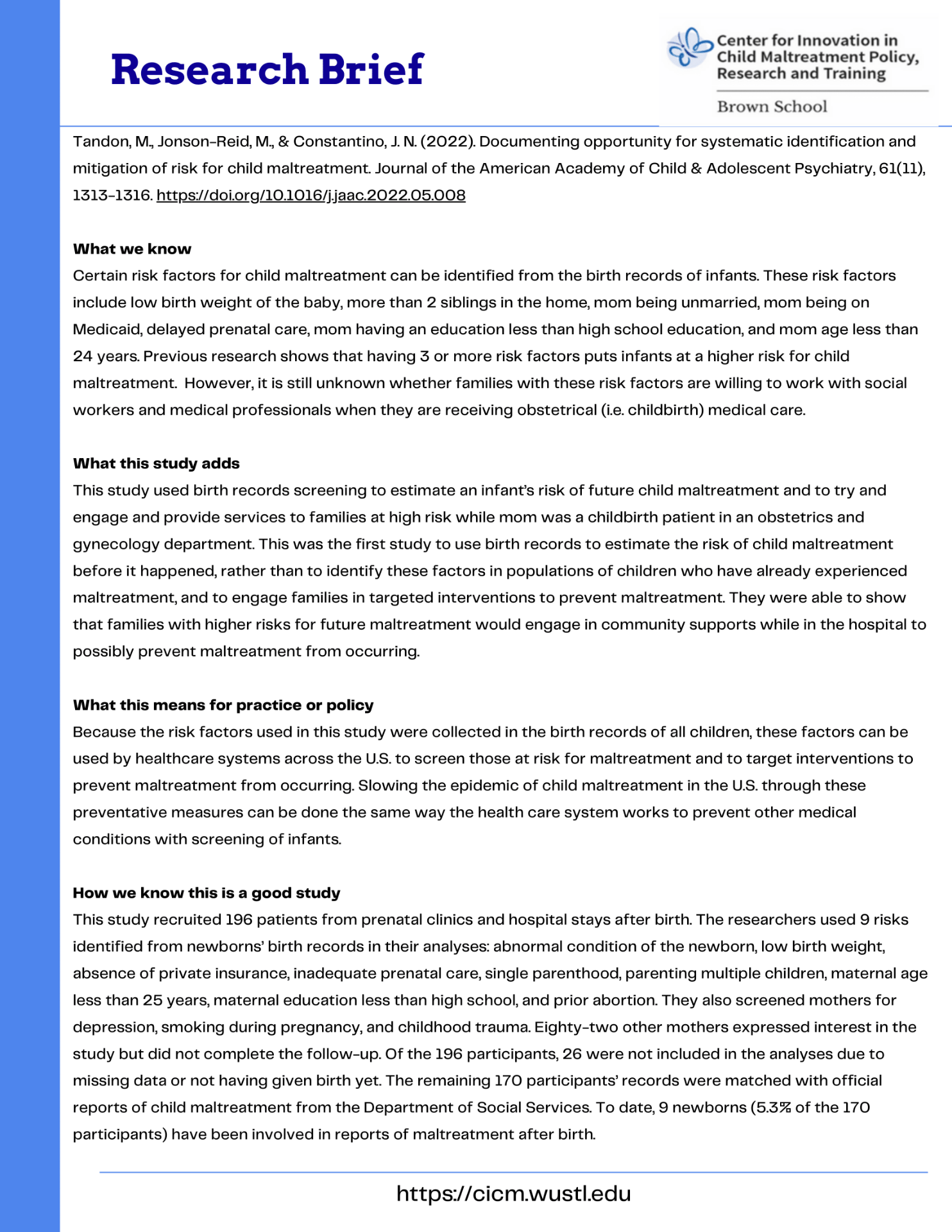Documenting Opportunity for Systematic Identification and Mitigation of Risk for Child Maltreatment
Research Brief

Tandon, M., Jonson-Reid, M., & Constantino, J. (2022). Documenting opportunity for systematic identification and mitigation of risk for child maltreatment. Journal of the American Academy of Child and Adolescent Psychiatry, 61(11), 1313-1316.
What we know
Studies have shown that certain risk factors for child maltreatment can be identified from the birth records of infants. These risk factors include low birth weight of the baby, more than 2 siblings in the home, mom being unmarried, mom being on Medicaid, delayed prenatal care, mom having an education less than high school education, and mom age less than 24 years. Previous research shows that having 3 or more risk factors puts infants at a higher risk for child maltreatment. However, it is still unknown whether families with these risk factors are willing to work with social workers and medical professionals while receiving obstetrical (i.e. childbirth) medical care.
What this study adds
This study used birth records screening to estimate an infant’s risk of future child maltreatment and to try and engage and provide services to families at high risk while mom was a childbirth patient in an obstetrics and gynecology department. This was the first study to use birth records to estimate the risk of child maltreatment before it happened, rather than to identify these factors in populations of children who have already experienced maltreatment, and to engage families in targeted interventions to prevent maltreatment. They were able to show that families with higher risks for future maltreatment would engage in community supports while in the hospital to possibly prevent maltreatment from occurring.
What this means for practice or policy
Because the risk factors used in this study were collected in the birth records of all children, these factors can be used by healthcare systems across the U.S. to screen those at risk for maltreatment and to target interventions to prevent maltreatment from occurring. Slowing the epidemic of child maltreatment in the U.S. through these preventative measures can be done the same way the health care system works to prevent other medical conditions with screening of infants.
How do we know this is a good study
This study recruited 196 patients from prenatal clinics and hospital stays after birth. The researchers used 9 risks identified from newborns’ birth records in their analyses: abnormal condition of the newborn, low birth weight, absence of private insurance, inadequate prenatal care, single parenthood, parenting multiple children, maternal age less than 25 years, maternal education less than high school, and prior abortion. They also screened mothers for depression, smoking during pregnancy, and childhood trauma. Eighty-two other mothers expressed interest in the study but did not complete the follow-up. Of the 196 participants, 26 were not included in the analyses due to missing data or not having given birth yet. The remaining 170 participants’ records were matched with official reports of child maltreatment from the Department of Social Services. To date, 9 newborns (5.3% of the 170 participants) have been involved in reports of maltreatment after birth.